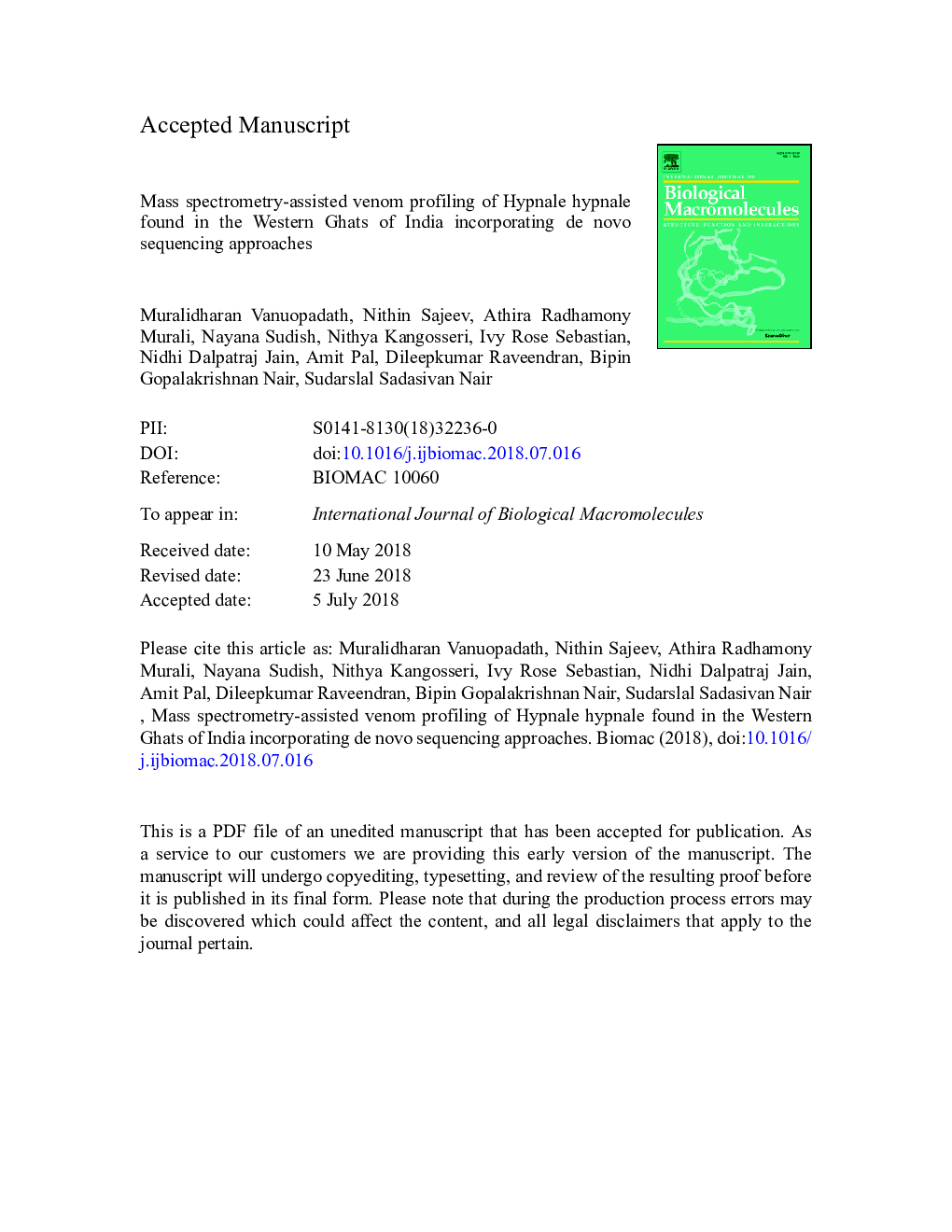| Article ID | Journal | Published Year | Pages | File Type |
|---|---|---|---|---|
| 10156867 | International Journal of Biological Macromolecules | 2018 | 44 Pages |
Abstract
Hypnale hypnale (hump-nosed pit viper) is considered to be one among the medically important venomous snake species of India and Sri Lanka. In the present study, venom proteome profiling of a single Hypnale hypnale from Western Ghats of India was achieved using SDS-PAGE based protein separation followed by LC-MS/MS analysis. The identities of the proteins that were not established using the Mascot search were determined through de novo sequencing tools such as Novor followed by MS-BLAST based sequence similarity search algorithm and PEAKS proteomics software. The combined proteomics analysis revealed a total of 37 proteins belonging to nine different snake venom families, in which 7 proteins were exclusively identified through de novo strategies. The enzymatic and non-enzymatic venom protein families identified include serine proteases, metalloproteases, phospholipase A2, thrombin-like enzymes, phospholipase B, C-type lectins/snaclecs, disintegrins, cysteine rich secretory proteins and nerve growth factor. Among these, disintegrins, nerve growth factor, phospholipase B and cysteine rich secretory protein families were identified for the first time in HPV venom. This could possibly explain the regiospecific venom variation seen across snake species. Taken together, the venom proteome profiling on Indian Hypnale hypnale venom correlates with the clinical manifestations often seen in the envenomed victims.
Related Topics
Life Sciences
Biochemistry, Genetics and Molecular Biology
Biochemistry
Authors
Muralidharan Vanuopadath, Nithin Sajeev, Athira Radhamony Murali, Nayana Sudish, Nithya Kangosseri, Ivy Rose Sebastian, Nidhi Dalpatraj Jain, Amit Pal, Dileepkumar Raveendran, Bipin Gopalakrishnan Nair, Sudarslal Sadasivan Nair,
